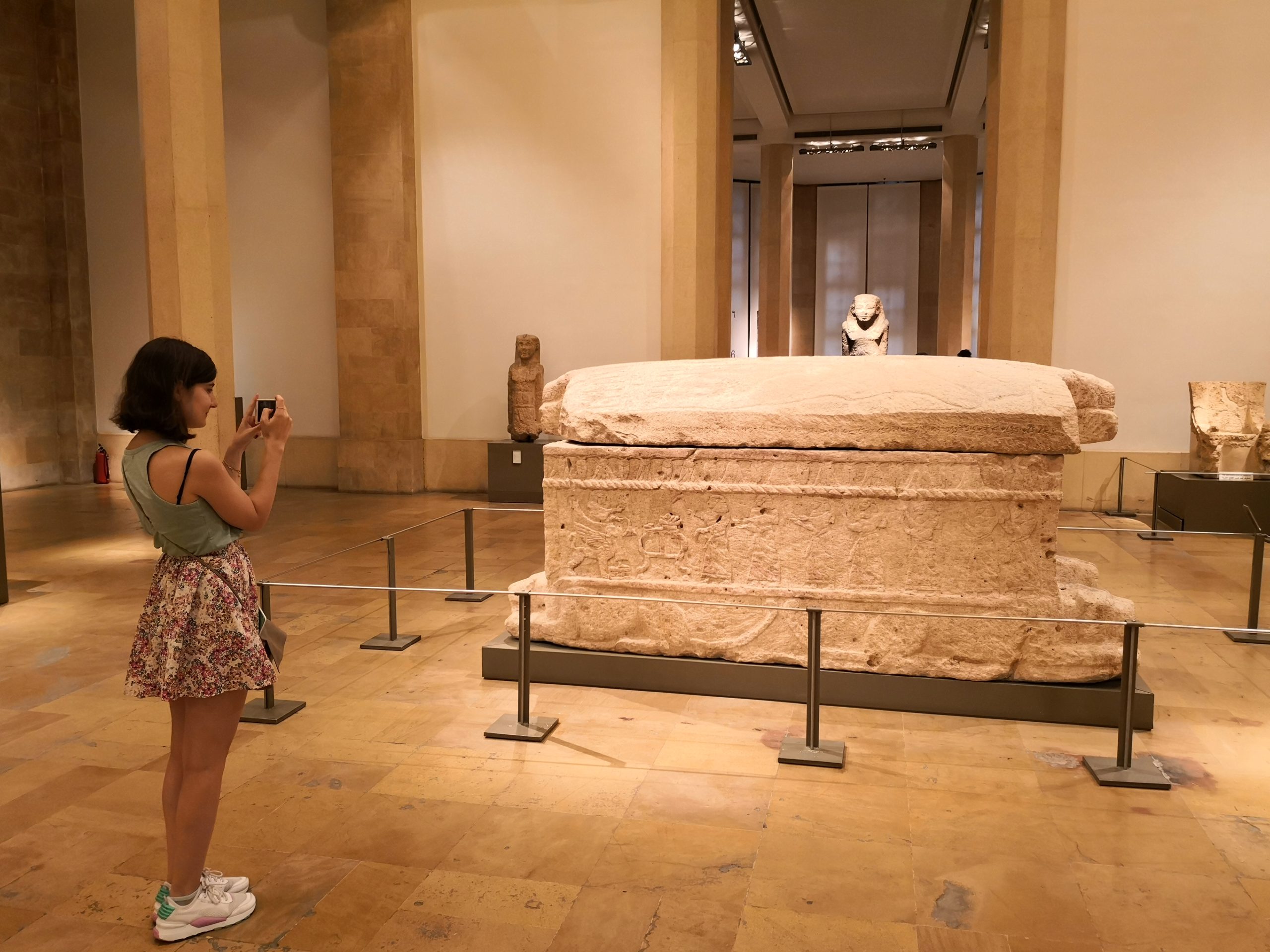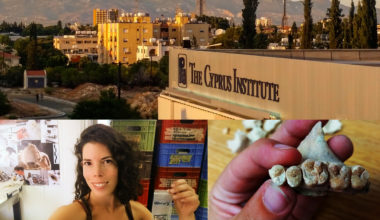
By Lamia Sassine, PhD candidate in archaeology at the University of Sheffield and 2018 CBRL Sam Lieu Travel Grant recipient.
The Phoenicians are usually academically defined as the people who occupied the central Levantine coast between 1200 and 333 BCE, having also established colonies across the Mediterranean, from Cyprus to Spain. All over the shores of the Mediterranean and beyond, the Phoenicians have also been subject to a plethora of interpretations, manipulations, and appropriations. Today, with growing evidence that the Phoenicians probably never identified as such themselves, the traditional definition is being reconsidered by most current academics (see Quinn), and Phoenician archaeology is at a turning point in its history.
My PhD project is centered on tracing trends in the perceptions of Phoenician identity as reflected in museum displays. I examine the material labelled as Phoenician in relevant museums, tracing the history of the displays to gain an understanding of the relationships between archaeological trends, perceptions in popular culture, and the museological approach.
In 2018 I was awarded the CBRL Sam Lieu Travel Grant to conduct research in Lebanon and Cyprus. Thanks to this funding, I was able to visit a total of five museums in both countries: the National Museum of Beirut, the American University of Beirut Archaeological Museum, the Cyprus Museum, the Archaeological Museum of the Limassol District, and the Archaeological Museum of Ancient Idalion. I was also able to meet the curators of the museums and conduct interviews with them, as well as to study old guides and archives.
As I expected, I found that the historical interpretation of the Phoenicians, as seen through the museum displays, was different in Lebanon and Cyprus. Interestingly, there were also significant discrepancies between museums in the same country.
In Lebanon, a significant portion of the population identify as descendants of the Phoenicians, who hold a treasured place in popular national memory. In spite of this, the National Museum of Beirut does not assign any greater importance to the Phoenician collection than any other in the museum. Collections are treated equally and are displayed in chronological order. Absolute dates as well as the stone, bronze and iron ages are given as points of reference with the Phoenician period placed within the Iron Age. The word “Phoenician” is found only on individual object labels where these feature an inscription in the Phoenician script.
On the other side of the city, the American University in Beirut (AUB) Museum tells a very different story. A large portion of the museum is dedicated to the Phoenicians whilst the remainder of the exhibition space is set up by chronology and by materials. Taking centre stage, there are many large panels and dedicated showcases that feature themes that the Phoenicians have stereotypically been associated with such as maritime trade and the alphabet (see virtual tour).
Whilst the National Museum of Beirut sets out to present an unbiased narrative of Lebanese history and doesn’t focus on any one particular period in order to avoid political debates about Lebanese identity, the AUB museum is modelled perhaps more on the personal interest of its curators. In the case of the AUB museum, the curator’s interpretations do not necessarily align with historian’s most recent reconsiderations of the Phoenicians. It is also worth noting that the current display at the AUB museum dates from 2006, a time when the Phoenicians were still defined by stereotypical ideas (from the alphabet to the famous craftsmanship and maritime activity) (see for example Markoe 2000). When I spoke with the museum’s curators, I learnt that there were no plans to update the displays.
In Cyprus, I discovered that many museums are currently undergoing major developments; the Paphos and Larnaca museums are currently closed for renovation, the Limassol museum is planning a renovation at the end of 2019 and a new national museum in Nicosia is currently in construction. In the case of the Cyprus Museum in Nicosia and the Limassol Museum, these renovations are well needed as most of their displays had been left almost untouched since they first opened, in 1908 and 1970 respectively. Their collections are presented chronologically and by material, with very limited information on provenance, contextualization, or any sort of interpretations. Individual object sare rarely labelled, and thus the designation of Phoenician is barely, if ever mentioned. Surprisingly, even the material from the royal tombs of Salamis, which has been the highlight of every exhibition about the Phoenicians, is left unlabelled as such.


At the Archaeological Museum of Ancient Idalion (established in 2008), the Phoenician collection is prominently displayed, with their influence on the material culture of the site during the Archaic and Classical period clearly stated. However, a small number of Greek artefacts feature most prominently across the museum’s showcases. A similar approach has been taken at the Limassol museum where a 2016 exhibition of Amathus, one of Cyprus’s ancient royal cities, avoids using the term ‘Phoenician’ in describing the artefacts on display. Again, this is to avoid political debate. Even the label of the anthropoid sarcophagus, strikingly similar to those found at the National Museum of Beirut, omits the term Phoenician.

My fieldwork confirmed that museum displays and curatorial policies can differ greatly as illustrated by the Lebanese example. In Cyprus, the lack of mention of the Phoenicians in the old displays is most probably due to the scarcity of labelling altogether, but even in the new displays, the degree to which they are given importance varies. I believe that this is due to the importance given to Greek cultural identity on the part of the island that I visited. I look forward to seeing how the new museums interpret the Phoenician element.
Sources:
Fontan, E. and Le Meaux, H. 2007 La Méditerranée des Phéniciens de Tyr à Carthage Paris: Somogy.
Markoe, G. 2000, Phoenicians, British Museum Press, London.
Quinn, J.C. 2018, In search of the Phoenicians, Princeton University Press, Princeton.
Lamia Sassine is a researcher currently undertaking her PhD at the University of Sheffield, under the supervision of Dr. Susan Sherratt. She has previously completed an MA (Merit) in Artefact Studies at University College London (2014) and a BA (Distinction) in archaeology at the American University of Beirut (2013). She has worked on several survey and excavation projects in Lebanon, as well as in museums and cultural institutions both in Lebanon and in the UK.
The views expressed by our authors on the CBRL blog are not necessarily endorsed by CBRL, but are commended as contributing to public debate.















